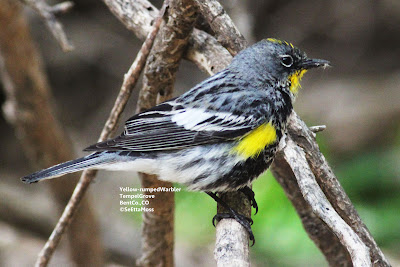Western Bluebird pair carrying food

This morning I birded the Canon City,CO Riverwalk for a bit and found this pair of Western Bluebirds in a field where they were foraging, often close to each other. I watched to see if they had a nest nearby as a pair had nested not far from this location last year. After almost 15 minutes I observed one then the other take off with food in it's bill, flying high up into a grove of trees presumably to feed nestlings in a natural nest hole there. I tried to find the nest site in this wooded area that has a lot of good nest holes in several trees but the area is being flooded with water. While I was watching I saw this long strand of apparent nylon line that was attached to a stick on the ground then sent about 80 feet up into a tall cottonwood where it was stuck--I guess it is some strong kite line. Most years a pair of Cooper's Hawks nests in this area and I didn't want to risk a young hawk not seeing it in time and injuring itself on this very strong line so I t...





